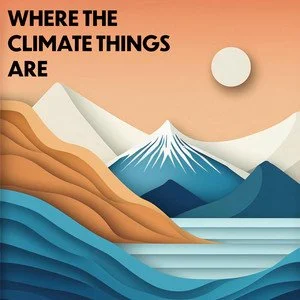Culture & Narrative
Writing, strategy, talks, and cultural work that bring wildlife and climate reality back into the outdoor conversation. These projects challenge outdoor norms, reframe familiar narratives, and help outdoor communities and organizations reconnect their work to the beings and ecosystems that make adventure possible. This includes essays, editorial pieces, panel development, values-led storytelling, and strategic collaboration with partners like NOLS through Wild for Climate.
-
What do racism, self hate, and the U.S. all have in common?? Brandy Melville.
I recently watched the HBO documentary "US. Brandy Hellville & The Cult of Fast Fashion" and I was going to post on LinkedIn about the visual impact of watching mountains of clothing drifting into the ocean....and the intrinsic connection between textile waste and the recent discovery of microplastics in the seabed of Antarctica.
Instead I'm writing about how sad it was to listen to the abuse and manipulation these girls went through....not just the girls that worked there, but the ones shopping and buying into the need to "belong", their need to put other girls down in order to feel better about themselves, and the inherent lack of self love.
What started as a "California girl" brand made in Italy but not made in Italy, turned quickly into a cult that exploits insecure girls. They knew that by setting a standard of "One size fits MOST" when all their clothes are soooo tiny, would feed off their deepest insecurities.
-
According to a recent research report released by Polaris Market Research, the global regenerative meat market size & share was valued at 979 million in 2022 and is expected to reach 3.6 million by 2032, growing at a CAGR of 14.1% during the forecast period. Not only does proper management allow for the regeneration of healthy, productive soils and grasslands, but it is also a major source of carbon sequestration.
As climate change reduces coverage of our native grasslands, regenerative pastures are proving to be important and sustainable carbon sinks. Studies are beginning to emerge touting the effectiveness of grassland carbon capture as more dependable than forests, as grasslands are not as prone to wildfires and disease, and regenerate far more quickly. The U.S. is one of the largest importers and exporters of meat. As the population grows, we need to push for investments in carbon sequestration. Regenerative farming mandate seems only logical if not necessary for us to continue producing at the current rate. -
In the Amazon, extensive cattle ranching is the number one culprit of deforestation in virtually every Amazon country, and it accounts for 80% of global deforestation. The Amazon is one of the largest carbon sinks in the world and absorbs roughly 2 billion tons of CO2 per year, but that number is declining as the forest emits more carbon than it absorbs due to wildfire brought on by cattle ranching.
The United States imported 4.125 billion pounds of beef from Brazil in 2024, which is an 11% increase from 2023. We are also the top consumer of beef, consuming just over 12.7 million metric tons of beef each year. Overall, beef exports accounted for 11 percent of U.S. domestic production. In 2021, the United States was the world’s largest beef producer, second-largest importer, and second-largest exporter by volume. Read the rest on my Substack



